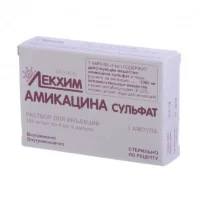Description
Levomak 750 Coated Tablets 750 mg. №10
Ingredients:
- Each coated tablet contains 750 mg of Levofloxacin.
Dosage:
- The usual dose is one tablet daily, or as directed by a healthcare professional.
Indications:
- Levomak 750 is indicated for the treatment of bacterial infections such as respiratory tract infections, urinary tract infections, and skin infections.
Contraindications:
- Do not use Levomak 750 if you have a history of hypersensitivity to Levofloxacin or other quinolone antibiotics.
Directions:
- Swallow the tablet whole with a full glass of water. Do not crush or chew the tablet.
Scientific Evidence:
- Levofloxacin, the active ingredient in Levomak 750, has been extensively studied for its efficacy in treating various bacterial infections. Research studies have shown that Levofloxacin exhibits broad-spectrum antibacterial activity against a wide range of pathogens.
Additional Information:
- It is important to complete the full course of treatment with Levomak 750 as prescribed by your healthcare provider, even if you start to feel better before the course is finished. Stopping the medication prematurely can lead to the development of antibiotic-resistant bacteria.
- Before taking Levomak 750, inform your doctor about any existing medical conditions or medications you are currently taking to avoid potential drug interactions.





